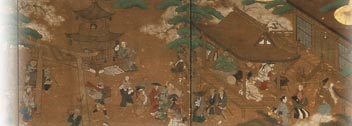“The Birth of Queer American Dance”
Outline
| date |
February 14, 2011 |
| Venue |
Waseda University Campus, Building 26, Lecture Room 302 |
| Organizer |
|
| outline |
The Dance Research Course welcomed as lecturer Susan Manning (professor at Northwestern University), who is known for her work on Mary Wigman, the founder of German expressionist dance, but who in recent years has been pursuing studies that examine dance history from the political perspectives of gender, ethnicity and race. She gave two lectures on the present state of dance studies in the US. |
Details
Focusing on issues of gender/ethnicity/race in American modern dance in terms of audience reception, Professor Manning discussed, with examples, the way audiences with different social identities take away totally different meanings from the same performance. This is strikingly evident in the case of sexuality, in particular; even in the case of dances that flaunt their same-sex sexual appeal, audiences with no homosexual urges are likely to be completely unaware of the sexual component. She explained the divergent reception based on the audience’s social identity by tracing historical changes in homosexuality (gay and lesbian) in the US and citing the examples of primarily male choreographers in American modern dance, Ted Shawn, José Limón, Merce Cunningham and Alvin Ailey. Thus, the works of these gay choreographers, she noted, precisely correspond with changes in the social environment around gays in the US. Her talk was followed by comments from commentator ISHII Tatsuro and a question-and-answer period; here questions were raised about the concept and scope of “cross-viewing,” which Ms Manning used in her talk, a term that denotes catching a glimpse of a work’s meaning in a context that is different from the audience’s own. This was an important lecture that offers a completely new perspective on dance studies in Japan by shedding light on the close relation among sexuality, society and dance, a topic that up until now has hardly ever been raised in the study of the history of American dance in Japan.
> Go To Page Top


